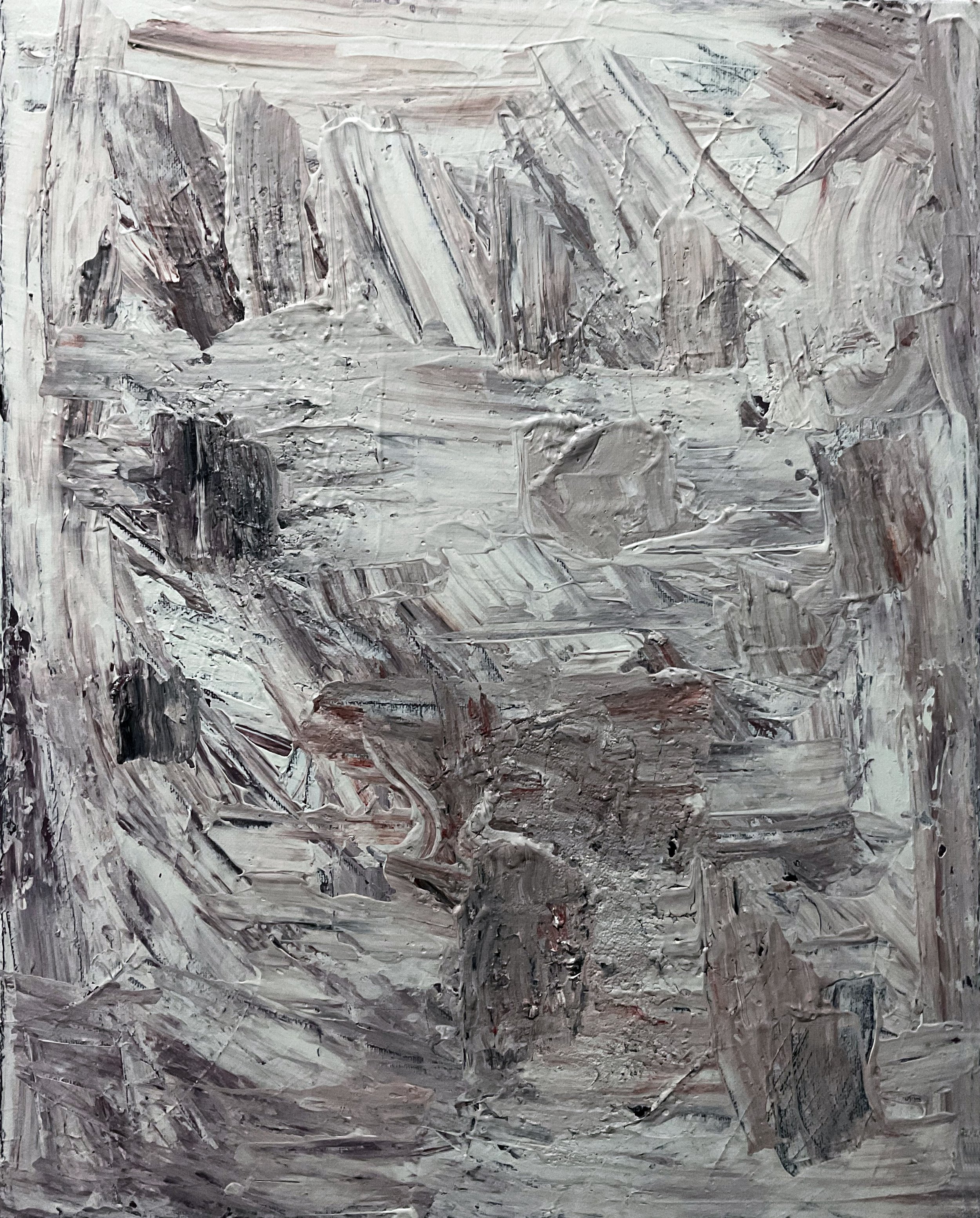
Cando K. Hoshino
by Erich von Neff
Art: “Skin” by Mirim Koh
Cando K. Hoshino sells art supplies:
Handmade paper
Raw pigments
Brushes, sumi-ink
Woodblock tools
Collage, origami
Books on oriental art
Betsy Yang entered Cando K. Hoshino’s shop. She adjusted her dark glasses, pushing them a little higher on her nose. Betsy Yang were black stockings, a black Shetland sweater, a black shirt, and black shoes, and she had black hair.
Cando K. Hoshino continued working in the back of her shop, restoring a Seventeenth Century Japanese tiger scroll. She used a magnifying glass, sumi-ink and brushes that were very fine and delicate.
Betsy Yang looked over the stacks and rolls of rice paper, touching each one. “Now which could look best on the wall of the Opus I Cafe,” she said to herself. “Something coarse and grainy.”
Cando K. Hoshino set down her magnifying glass and rubbed her eyes. She put the brush back on its holder, smoothed her kimono, and walked to the front of the shop.
“May I help you?” Cando K. Hoshino asked.
“It’s hard to tell what kind of paper I’m going to need,” Betsy Yang replied.
“Well, there are many types as you can see.”
Cando K. Hoshino pulled a few sheets off the shelf behind her. She laid them out on the counter. Realizing that this would probably only confuse Betsy Yang more, -- at least temporarily -- she returned to the back of her shop.
Betsy Yang paced the floor, looking and touching the various types of paper. Size and texture. These were truly debatable questions. Composition reflected on the cosmos of the paper… determining composition. Betsy Yang mused: “The way of the brush is really the way of the paper.”
Here the matter rested. Betsy Yang drew three fingers down her face, tracing barely visible lines.
Handmade paper
Raw pigments
Brushes, Sumi-ink
Woodblock tools
Collage, origami
Books on Oriental Art
Betsy Yang now ran her fingers over each piece of paper: Kozo, Shiyi, Gami, Uwa, and Chiri which she found a little too smooth. Cando K. Hoshino reappeared from the back of the shop. “Still looking?” she asked. Betsy Yang nodded. “Maybe if I knew a little more about what you had in mind.” Cando said.
“It’s going to be called ‘The House of the Fan’**.” Betsy responded offering no further explanation. At this Cando K. Hoshino cupped her hand to her mouth stifling a yawn, though it was really a smile. What Betsy Yang had in mind, but did not say so was stylized erotica of the clearest black and white. She did not fancy a more graphic representation such as with Utamoro***, though from her look and from her manner, who is to say that Cando K. Hoshino was not aware of these erotic intentions.
In the end Betsy Yang choose the Uwa. It was just grainy enough for brush strokes that could excite the eye.
She also bought sumi ink and a brush.
“So this is your favorite,” Cando said as she wrapped up the paper. “Well, it will give texture to the ink.”
“Will that do?” Cando K. Hoshino asked.
“Certain things must be considered,” Betsy Yang said emphatically. “For instance, when one get closer to the brush strokes or if one is too far away.”
“But, if one were to walk by very quickly,” Cando observed.
“That would be the best,” Betsy stated. “No, nothing else.”
“I wonder,” Betsy Yang said, almost to herself, “If I were to write with a brush and sumi ink, would my writing improve?”
Cando K. Hoshino paused, then spoke. “That would depend on you. That would all depend on you.”
Betsy Yang thought for a moment. She would not get a writing brush for now.
Cando K. Hoshino added up the prices of each item on a piece of yellow paper.
“There, ... eight dollars and fifty one cents.” Betsy Yang handed her a ten dollar bill. Cando K. Hoshino reached in a drawer for the change.
As Cando K. Hoshino turned to go to the back of the shop the sleeves of her kimono were swept in opposite directions.
Betsy Yang readjusted her dark glasses, pushing them a little higher on her nose.
Cando K. Hoshino:
Handmade paper
Raw pigments
Brushes, sumi-ink
Woodblock tools
Collage, origami
Books on oriental art
---
* Located at 1541 Clement Street in San Francisco.
** Famous Brothel during the Kwasei period (1789-1801).
*** Famous pornographic artist prominent during the Kwasei period.
About the Author
Erich von Neff is a San Francisco longshoreman. He received his master’s degree in philosophy from San Francisco State University and was a graduate research student at the University of Dundee, Scotland.
He is well known in both French avant-garde and mainstream literary circles. In France, he has won awards such as Prix 26, given readings at the Cafe Montmartre, and published over 1295 poems and 289 short stories. In 2023, Editions Unicite published his book, 6 Affaires rèsolues par Frieda et Gitta: notre duo de charme de la police parisienne.

